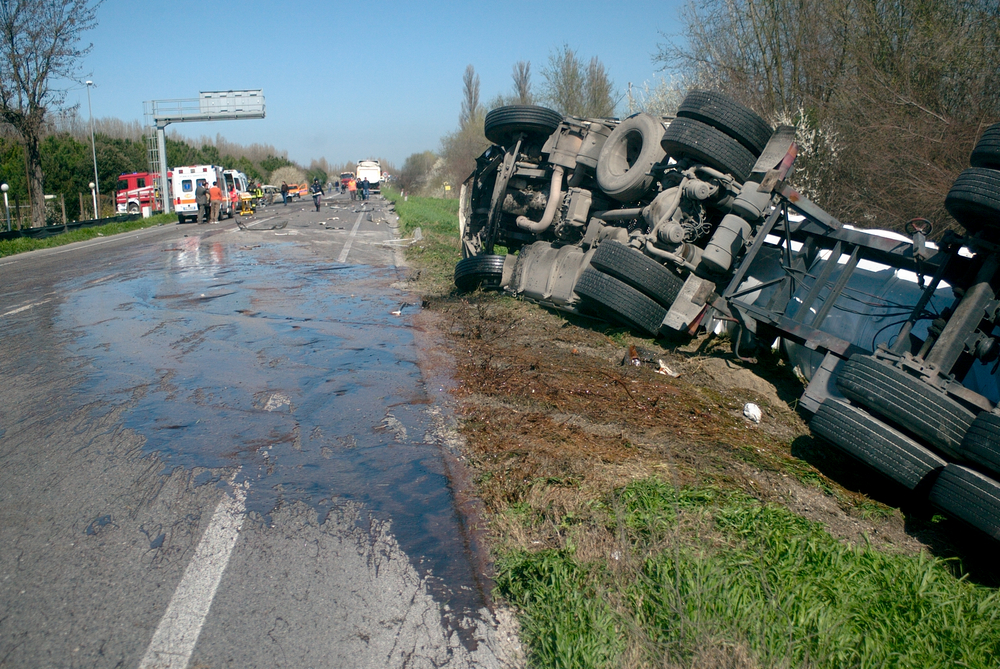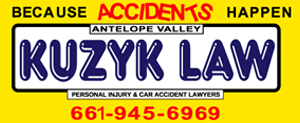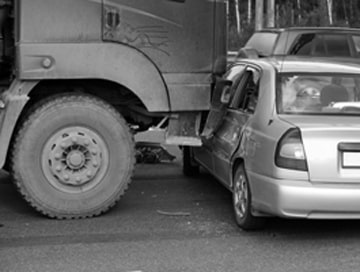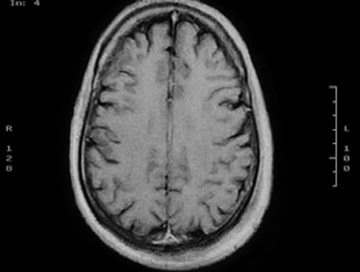
California’s bustling freeways are a lifeline for commerce, with countless large trucks transporting goods across the state. While these titans of the road keep our economy moving, sharing the road with them can be nerve-wracking.
Unfortunately, truck accidents can have devastating consequences. Understanding the common causes of truck accidents is crucial for drivers and motorists to navigate California’s roads safely.
The Federal Motor Carrier Safety Administration (FMCSA) reports over 490,000 large truck crashes occurred in the United States in 2021 alone. While California-specific data isn’t isolated within this statistic, the national numbers highlight the prevalence of these accidents.
Kuzyk Personal Injury & Car Accidents Lawyers, a respected personal injury law firm in Fresno, California, understands the complexities of car accidents, including those involving large trucks.
Driver Fatigue
Exhaustion is a primary culprit in truck accidents. Long hours on the road and disrupted sleep turn truck drivers into dangers behind the wheel. Reaction time plummets, judgment weakens, and a multi-ton truck becomes a potential weapon.
Spot the Signs:
- Frequent yawning
- Difficulty focusing or keeping eyes open
- Drifting lanes
- Missing traffic signals
Distracted Driving
Distracted driving actively diverts a driver’s attention. In the case of large trucks, a momentary lapse in focus caused by a phone call, text message, or fiddling with the radio can have catastrophic consequences.
The Dangers of Distraction:
Anything that takes your eyes off the road, hands off the wheel, or mind off driving is a distraction. Common culprits include:
- Using cell phones (texting, talking, browsing)
- Eating or drinking
- Adjusting the radio or GPS
- Drowsiness (covered previously)
- Talking to passengers
Driving under the influences
Driving under the influence of alcohol or drugs (DUI) is never acceptable, and the consequences are severe. Alcohol and drugs significantly impair reaction time, coordination, and judgment, making it nearly impossible to drive safely.
Sharing the Road Responsibilities:
Be aware of your potential distractions and avoid multitasking behind the wheel. If you see a truck driver exhibiting signs of distracted driving, give them plenty of space and report the behavior to the authorities.
Inexperienced or Improperly Trained Drivers
Large trucks require a skilled and experienced driver at the helm. Inexperienced or improperly trained drivers are a severe threat on the road.
- New Drivers Lacking Experience: They may need help maneuvering, maintaining safe following distances, and handling emergencies.
- Inadequate Training Shortcuts Safety: Cutting corners on training can leave drivers unprepared for the complexities of operating a commercial truck.
Mechanical Failures
Unlike a car stalling on the side of the road, a malfunctioning truck can have much more severe consequences.
- Brake malfunctions: Faulty brakes can significantly increase stopping distances, leading to rear-end collisions or difficulty avoiding obstacles.
- Tire blowouts: A sudden tire blowout can cause the driver to lose control, potentially leading to rollovers or swerving into other lanes of traffic.
- Steering problems: Difficulty steering can make it nearly impossible to navigate corners or avoid hazards.
Poor Maintenance
Regular maintenance is vital for preventing mechanical failures. Neglecting necessary maintenance can lead to:
- Worn brakes and tires
- Malfunctioning lights and signals
- Engine problems that impact steering or control
Be Aware, Be Prepared: Sharing the Road with Large Trucks
If you notice a truck with malfunctioning lights, brakes, or other issues, give them plenty of space and report the problem to the authorities.
Overloading or Improperly Loaded Cargo
Trucks are designed to carry specific weight limits. Exceeding these limits or improperly securing cargo can lead to:
- Instability and rollovers: An overloaded or improperly loaded truck has a higher center of gravity, making it more susceptible to tipping over, especially during turns or on uneven terrain.
- Falling debris: Unsecurely fastened cargo can become loose and fall onto the road, creating a hazard for other vehicles.
Adverse Weather Conditions
California’s weather can be unpredictable, and factors like rain, fog, snow, and high winds can significantly impact driving conditions. These conditions can:
- Reduce visibility: Making it difficult for truck drivers and motorists to see the road and potential hazards.
- Affect handling: Wet or icy roads can make it harder for trucks to brake, accelerate, and maneuver safely.
Road Infrastructure Issues
While driver behavior and truck maintenance are crucial factors, the condition of the road itself can also contribute to accidents.
- Poor road conditions: Potholes, uneven pavement, and inadequate shoulders can create hazards for large trucks, especially when carrying heavy loads.
- Limited visibility: Blind curves, overgrown vegetation, or lack of proper signage can make it difficult for truck drivers and motorists to navigate safely.
Driver Negligence
Unfortunately, even the most well-maintained truck and perfect road conditions can’t prevent accidents caused by reckless driving.
- Driver Negligence: Speeding, aggressive driving, failing to yield the right of way, or driving under the influence are all forms of driver negligence that can have devastating consequences.
Rollovers
Large trucks have a higher center of gravity, making them more prone to rollovers. These rollovers can cause catastrophic injuries or fatalities for occupants involved in the accident.
- Sharp turns or sudden maneuvers: Taking corners too quickly or making abrupt lane changes can destabilize the truck and increase the risk of a rollover.
- Uneven terrain: Driving on uneven surfaces or encountering potholes can cause the truck to lose balance and tip over.
- Shifting cargo: Improperly loaded cargo can become dislodged during transit, creating an uneven weight distribution that can trigger a rollover.
Blind Spots
Large trucks have extensive blind spots, particularly on the sides and rear of the vehicle. A motorist can be utterly invisible to the truck driver in these areas.
- Right-side blind spot: This is the most prominent blind spot for most trucks. It’s crucial to avoid lingering alongside a truck in this zone.
- Left-side blind spot: While smaller than the right, the left blind spot can still pose a danger, especially when turning left.
- Rear blind spot: This area directly behind the truck is entirely invisible to the driver. Never cut directly in front of a truck.
Aggressive Driving
Sharing the road requires patience and courtesy from all drivers. Aggressive driving behaviors create unnecessary risks, especially when dealing with large trucks.
- Tailgating: Following too closely behind a truck significantly reduces your reaction time in case of a sudden stop.
- Reckless lane changes: Cutting off a truck or weaving in and out of traffic can lead to collisions.
- Speeding: Exceeding the speed limit is dangerous for all vehicles. Still, a truck’s increased size and weight make speeding particularly hazardous.
Road Conditions
The condition of the road is a factor that can impact both truck drivers and motorists.
- Pavement Issues: Potholes, cracks, or uneven surfaces can cause trucks to swerve or lose control.
- Limited Visibility: Heavy rain, fog, or low light conditions can make it difficult to see potential hazards on the road.
- Construction Zones: Narrowed lanes and uneven pavement in construction zones require extra caution from all drivers.
Weather
California’s diverse climate can throw a variety of weather conditions at drivers, and each has its own set of challenges.
- Rain: Wet roads can make it harder for trucks to brake and maneuver, increasing the risk of rear-end collisions or loss of control.
- Fog: Reduced visibility due to fog makes it difficult to see other vehicles and potential hazards on the road.
- Snow and Ice: Snowy or icy conditions can significantly impact traction and control, especially for large trucks.
- High Winds: Strong winds can push a truck off course or cause rollovers, particularly on bridges or when the truck is empty.
Underride Crashes
Underride crashes occur when a smaller vehicle collides with the back of a large truck and slides underneath the trailer. These accidents are often deadly due to the significant difference in height and weight between the vehicles involved.
- Causes of Underride Crashes: Rear-end collisions caused by distracted driving, following too closely, or sudden truck braking can all lead to underride crashes.
- Sharing the Road Responsibilities: Motorists should maintain a safe following distance and avoid braking suddenly in front of a truck.
Preventive Measures and Safety Tips
Tips for Truck Drivers:
- Prioritize adequate sleep: Combat driver fatigue by planning rest stops, utilizing sleeper berths, and adhering to FMCSA regulations on driving hours.
- Eliminate distractions
- Maintain a safe following distance
- Conduct regular vehicle inspections
- Secure cargo properly: Ensure cargo is evenly distributed, within weight limits, and securely fastened to prevent shifting or falling debris.
- Adjust speed for weather conditions: Slow down in rain, fog, snow, or high winds to maintain control of your vehicle.
- Be aware of blind spots: Utilize mirrors effectively and check blind spots frequently before changing lanes or turning.
- Practice defensive driving techniques: Anticipate other drivers’ actions, assume they may not see you, and be prepared to react defensively.
Tips for Motorists Sharing the Road with Trucks:
- Maintain a safe following distance: Give trucks plenty of space to brake and avoid cutting them off abruptly.
- Be aware of truck blind spots: Avoid lingering in blind spots and make yourself visible before changing lanes.
- Use your turn signals clearly and well in advance: Give truck drivers ample warning of your intentions.
- Pass trucks only when safe and legal: Never attempt risky maneuvers to overtake a truck.
- Yield the right of way: Allow trucks enough space to merge or turn, especially at intersections.
- Don’t tailgate: This significantly reduces your reaction time in case of a sudden stop by the truck.
- Be patient: Large trucks require more time to accelerate, brake, and maneuver. Share the road courteously.
Importance of Ongoing Safety Training and Education:
- Reinforce safe driving practices: Regular refreshers keep safety protocols top-of-mind for drivers.
- Educate on new regulations: Staying updated on changing laws and regulations ensures compliance and safety.
- Develop defensive driving skills: Training scenarios can help drivers anticipate and react safely to unexpected situations.
- Reduce driver risk factors: Programs can address fatigue, distractions, and aggressive driving.
Steps to Take After a Truck Accident in California
General Steps After a Car Accident:
- Ensure Safety: Check yourself and others involved for injuries. If necessary, call 911 immediately for medical assistance.
- Secure the Scene: Turn on hazard lights, and if possible, move vehicles out of traffic to avoid further accidents.
- Exchange Information: Collect contact details and insurance information from all parties involved, including witnesses.
- Document the Scene: Take photographs of vehicle damage, skid marks, weather conditions, and visible injuries.
- Report the Accident: File an accident report with the local police department, regardless of the accident’s severity.
- Seek Medical Attention: Even if you feel okay, get checked by a doctor to identify potential hidden injuries.
- Don’t Discuss Fault: Avoid admitting fault or discussing the accident details with anyone except the police and your lawyer.
- Contact Your Insurance Company: Report the accident to your insurance provider immediately.
Kuzyk Personal Injury & Car Accidents Lawyers’s Recommendations for Truck Accident Cases:
Following a truck accident, the stakes are often higher due to the potential for severe injuries and complex legalities.
- Contact Us Immediately: Be sure to speak with an experienced lawyer. The sooner we get involved, the better we can investigate the accident and protect your rights.
- We Handle the Legal Complexities: Truck accident cases often involve multiple parties, like trucking companies and insurance providers. We’ll navigate the legal system and fight for the compensation you deserve.
- Investigate Thoroughly: Our team will meticulously investigate the accident, gathering evidence to establish fault and build a strong case.
- Negotiate on Your Behalf: We’ll handle all communication with insurance companies and strive to secure a fair settlement offer.
- Trial-Ready Representation: If a settlement isn’t reached, we’ll take your case to court and fight for justice.
Beyond the Roadblocks: Recovering After a Truck Accident in California
If you’ve been involved in a truck accident in California, you don’t have to navigate the legal complexities alone. Kuzyk Personal Injury & Car Accidents Lawyers can help.
- Experienced Truck Accident Lawyers
- Compassionate Representation
- Thorough Investigations
- Skilled Negotiators
- Free Consultation
At Kuzyk Personal Injury & Car Accidents Lawyers, we’re dedicated to fighting for the rights of accident victims in California. Let us help you get the compensation you deserve so you can move forward with your life.












